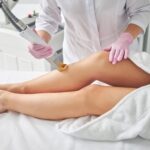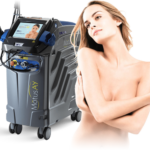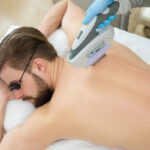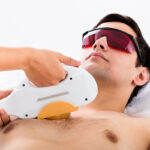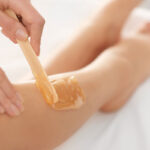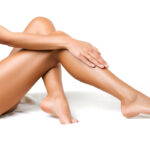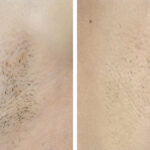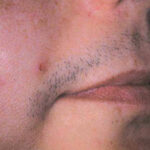USA – Atlanta – Klinische Studie zu Haarentfernung > Überraschende Ergebnisse mit Diodenlasern

Dermatologic Surgery
810-nm Diode Laser Offers ‘Impressive’ Results
Damian McNamara
Miami Bureau
ATLANTA — Researchers found no differences in hair removal efficiency or patient comfort when patients were treated on one side for 6 milliseconds and on the other for 40 milliseconds with an 810-nm diode laser, according to a study presented at the annual meeting of the American Society for Laser Medicine and Surgery.
In a double-blind study, 75 participants with unwanted hair were treated with the Asclepion MeDioStar 810-nm power-pulsed diode laser. The laser featured a 12-mm, sapphire-cooled tip and fluences of 10-40 J/cm2. All participants received a minimum of three treatments (range three-eight), and 84% were Fitzpatrick skin types II and III.
The study was a “real-world situation” because it included both patients who had previously had laser hair removal and those who had not, said Dr. Albert J. Nemeth, medical director of the Advanced Specialized Laser Center in Clearwater, Fla.
“We found impressive hair removal on both sides,” he said. “Both 6 milliseconds and 40 milliseconds were equally highly efficacious.” Results were the same for 69 out of 70 participants; the other participant experienced 20% more hair removal on the side treated for 6 milliseconds.
Hair removal efficiency improved after one, two, and three treatments in naive participants—an average of 26%, 45%, and 63%, respectively.
“This laser is very effective, but there is slower clearing in axillae and extremities,” said Dr. Nemeth, also of the University of South Florida, Tampa. The most notable hair removal to date in this ongoing study is on the lip, chin, neck, bikini area, pubic area, beard, abdomen, back, shoulders, buttocks, and upper arms. All these areas had effective and rapid clearing. There was a fair response in the glabella region and the toes and a poor response on the ears. There were no significant differences in patient comfort. “Only three patients (4%) consistently found the 6-millisecond laser more comfortable,” Dr. Nemeth said.
Adverse effects were rare. For example, only 4 of 619 total treatment sessions resulted in occasional crusting. No participant experienced scarring or permanent sequelae.
In another study presented at the meeting, Dr. Neil S. Sadick removed unwanted hair in 24 women using the Zeiss-Meditech 810-nm diode laser. The mean age of participants was 33 years; all received three monthly treatments with follow-up at 6 months. Patients had Fitzpatrick skin types II-IV, with light to dark brown hair. Dr. Sadick used a 12-mm spot size, pulse duration of 50 milliseconds, and a fluence of 25-35 J/cm2 to treat the face, bikini region, and axillae.
Handheld magnifiers were used to count hairs at baseline, after each treatment, and at follow-up. Two independent observers also performed hair counts using digital photography.
Adverse effects were rare: Two patients had transient hyperpigmentation, said Dr. Sadick of Cornell University, New York.
At 3 months, there was a 74% mean hair removal efficiency, which was largely maintained at 6 months. Best results were attained in patients with type III skin who were treated for bikini-area hair.
Five participants had biopsies at baseline, 1 month, and 3 months to assess histologic changes. There was vacuolar degeneration of the pilosebaceous outer root sheath, Dr. Sadick said. Biopsy results also showed multinucleated shaft cells.
Dr. Sadick disclosed that he received equipment and a research grant from Asclepion. Dr. Nemeth disclosed that he purchased one laser and a second was provided by the company for the comparative study.
This patient is shown before five treatments with the 810-nm laser with fluences of 29-32 J/cm2. Treatments were 6 weeks to 3 months apart.

Two months after treatment was completed, the patient’s upper lip is still clear of unwanted hair. Photos Courtesy Dr. Albert J. Nemeth

